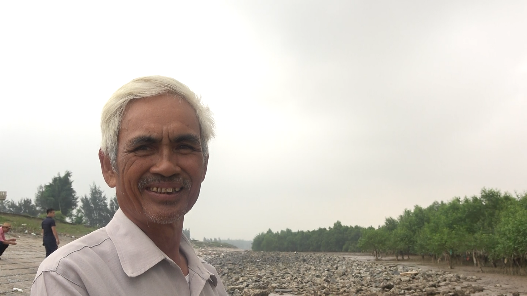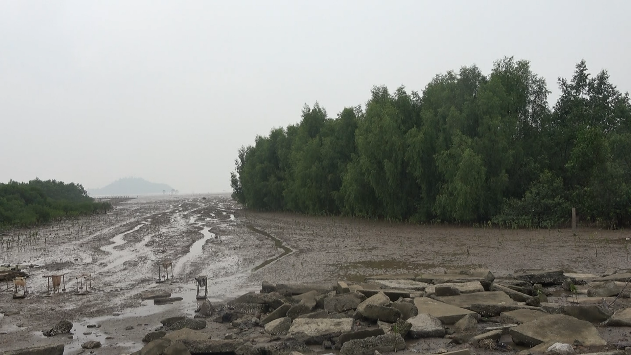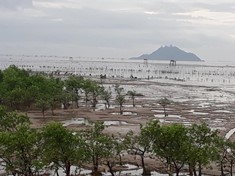
 Human stories
Human stories
Gesturing towards the trees, Mr. Bui Quyet Chien (Yen Loc village, Da Loc commune, Hau Loc district, Thanh Hoa province) proudly shares the journey that led to their planting. “Thanks to this mangrove forest, my village will no longer have to worry about storms.”

Da Loc, a coastal commune in the Hau Loc district of Thanh Hoa province, suffers annually from storms and floods which frequently cause heavy or even life-threatening damage to houses, property, and crops. Local and provincial authorities have held many meetings to find ways to lower disaster risk in seaside communities like theirs. One such solution, supported by both the government and people, has been planting mangrove trees along the coast.
In the early days, according to Mr. Chien, everyone expected mangrove planting to be a simple task. They soon realized, however, that they had significantly underestimated the high level of technical skill required. Their lack of experience and knowledge of afforestation techniques, as well as the erratic rhythm of the tides and the weather entering the rainy season, caused many difficulties in transporting and planting the seedlings. In the beginning, most of the newly planted trees were swept away by the waves before their roots were able to firmly anchor in the ground. Even after several attempts, very few survived.
Despite these many initial challenges, Da Loc commune’s determination to prevent storm damage has since led them to make considerable achievements in planting and restoring mangroves. Thanks to coordination between the government and the community, and with support from a Green Climate Fund (GCF) project on coastal resilience, specialized provincial agencies have assigned technical staff to provide training for the people of Da Loc. As part of their instruction, locals have been taught methods for planting trees, tending forests, and ensuring that boats will not enter the planting area, as well as making additional bamboo barriers to lessen the impact of tidal waves.
“We are very excited to have support from the GCF project to regenerate mangroves in coastal communes like ours,” says Mr. Chien. Pointing to a patch of newly planted seedlings, he adds, “This forest will protect not only the people of Da Loc, but also other communes such as Hung Loc, Ngu Loc, and Minh Loc, because it is the most important part of the dyke."

Mangroves are a kind of ‘green shield’ that can be used to protect people, houses, and fields from disasters, and come with many other economic and environmental benefits. Mr. Nguyen Viet Nghi, project coordinator for Thanh Hoa province, said: “So far, the project ‘Improving the Resilience of Vulnerable Coastal Communities to Climate Change-Related Impacts in Viet Nam’ organized the planting and restoration of about 350 hectares of mangroves to revitalize coastal alluvial areas, as well as increasing green cover in poor-quality forest areas to enhance their ability to reduce the effect of strong winds and storms.”

Over the past twenty years, the first trees planted on the mudflats of Da Loc commune have grown splendidly. Nearly 1,000 hectares of mangroves have been planted along the coast from Hau Loc to Nga Son, forming a solid wall against storms and waves and protecting these peaceful villages every rainy season.
By Le Quang Hanh